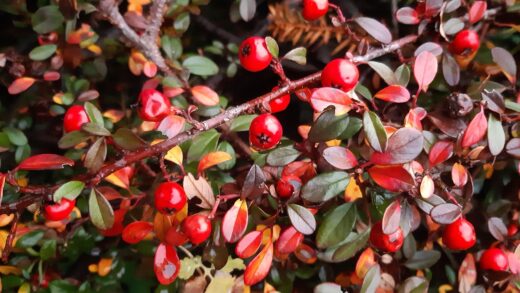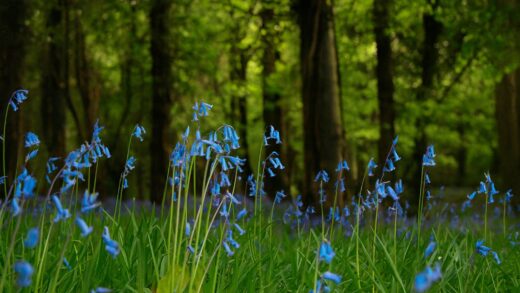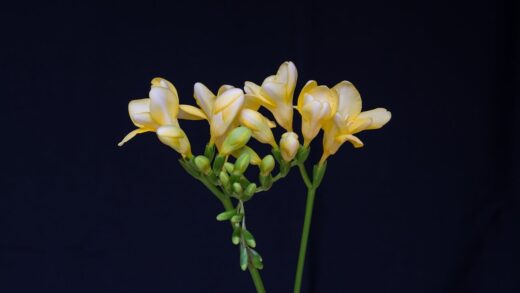Pruning is one of the most transformative and essential practices in the cultivation of a lemon-scented geranium, serving as a powerful tool to shape the plant’s growth, enhance its health, and maximize its aromatic potential. Far from being an act of harm, a thoughtful and well-timed cut is a direct communication with the plant, encouraging it to grow in a way that is both aesthetically pleasing and beneficial to its long-term vigor. Without regular pruning, this particular geranium has a natural tendency to become leggy and sparse, with long, woody stems and foliage concentrated only at the tips. Strategic cutting back is the key to counteracting this habit and creating the dense, bushy specimen that is so highly desired.
The fundamental principle behind pruning is an understanding of how the plant responds to being cut. When a growing tip is removed, the plant’s energy is redirected to the dormant lateral buds located further down the stem at the leaf nodes. This stimulation prompts these buds to break dormancy and grow, resulting in the development of multiple new branches where there was previously only one. This simple action, repeated throughout the plant, is what transforms a spindly individual into a full, well-rounded, and lush specimen.
Pruning is not a one-time event but an ongoing conversation with your plant throughout the growing season. It involves different techniques for different purposes, from a “hard prune” in the spring to rejuvenate the plant after winter, to the gentle “pinching” of new growth in the summer to maintain its shape, and the diligent “deadheading” of spent flowers to encourage continuous blooming. Each type of cut serves a specific purpose, contributing to the overall health and beauty of the plant.
Ultimately, mastering the art of pruning empowers you to become the architect of your plant’s form. It allows you to remove weak or damaged growth, improve air circulation through the plant’s canopy, and stimulate the production of fresh, new foliage that is packed with the highest concentration of fragrant essential oils. By embracing pruning not as a chore but as a vital aspect of care, you will be rewarded with a lemon-scented geranium that is not only healthier but also significantly more beautiful and aromatic.
The purpose and benefits of pruning
The primary purpose of pruning a lemon-scented geranium is to control its shape and promote a desirable growth habit. These plants naturally tend towards an upright, sometimes gangly, form. Regular pruning and pinching are essential to encourage branching, which is the key to achieving a full, bushy, and compact plant. By removing the terminal bud at the end of a stem, you redirect the plant’s hormonal signals to activate the lateral buds below the cut, leading to a denser and more attractive plant structure.
More articles on this topic
Pruning also plays a crucial role in enhancing the plant’s health and vitality. The process involves the removal of any dead, damaged, or diseased stems and leaves. This not only improves the plant’s appearance but also eliminates potential entry points for pathogens and removes hiding places for pests. Furthermore, thinning out dense growth by selectively removing some inner branches can significantly improve air circulation throughout the plant’s canopy, which is a critical step in preventing common fungal diseases like botrytis and powdery mildew.
Another significant benefit of regular trimming is the stimulation of new growth. The youngest, freshest leaves on a lemon-scented geranium contain the highest concentration of the essential oils that produce its signature fragrance. By consistently pinching back stems, you are encouraging the plant to produce a constant supply of this new, highly aromatic foliage. This means that a well-pruned plant will not only look better but will also smell much stronger and more pleasant than an unkempt one.
Finally, pruning is a key technique for rejuvenating an older, overgrown plant. A lemon-scented geranium that has become very woody and leggy over several seasons can often be given a new lease on life with a hard rejuvenation prune. This involves cutting the old, woody stems back significantly in the early spring, which stimulates the plant to produce a flush of new, vigorous growth from its base. This process can effectively reset the plant, transforming it back into a more compact and productive specimen.
Essential tools for the job
Having the right tools is essential for making clean, precise cuts that heal quickly and minimize stress on the plant. The most indispensable tool for pruning geraniums is a good pair of bypass pruning shears, often called secateurs. Bypass pruners work like scissors, with two curved blades that pass by each other to make a clean cut. This is far superior to anvil-style pruners, which have a single blade that crushes the stem against a flat surface, causing more damage to the plant tissue.
More articles on this topic
For smaller, more delicate work, such as pinching soft new growth or deadheading flowers, a pair of small, sharp scissors or specialized floral snips is ideal. These allow for greater precision and control, enabling you to snip off just the tip of a stem or a single flower stalk without damaging the surrounding leaves and buds. Keeping your tools sharp is paramount; a dull blade will tear or crush the stem rather than slicing it cleanly, leaving a ragged wound that is more susceptible to disease.
Cleanliness is just as important as sharpness. Plant diseases can be easily spread from one plant to another on contaminated pruning tools. It is a crucial best practice to sanitize your tools before you begin pruning and between cutting different plants. This can be easily done by wiping the blades with a cloth soaked in rubbing alcohol or a 10% bleach solution (one part bleach to nine parts water). This simple step can prevent the inadvertent transmission of bacterial and fungal pathogens throughout your garden.
While gloves are not a cutting tool, they are an essential piece of equipment for the task. Not only do they protect your hands from scratches and dirt, but they also help to keep the plant clean from any oils or contaminants on your skin. Choose a pair that fits well and allows for good dexterity, so you can handle the plant and your tools with confidence and precision. Having your sharp, clean tools and a good pair of gloves ready makes the pruning process more efficient, effective, and safe.
Techniques for shaping and pinching
Pinching is the most important technique for creating a dense, bushy lemon-scented geranium. It is a simple and gentle form of pruning that can be done regularly throughout the active growing season, from spring to late summer. The process involves using your thumb and forefinger, or a pair of small snips, to remove the very top portion of a growing stem, typically the top one or two pairs of leaves. This removes the apical bud, which is responsible for the stem’s upward growth.
When you pinch off the growing tip, you stimulate the dormant buds located in the leaf axils (the point where the leaf joins the stem) just below the pinch point. These buds will then activate and grow into new branches. So, for every single tip you pinch, you will typically get two new stems growing in its place. Consistently applying this technique to the tips of all the main stems will quickly transform a lanky plant into a well-branched, full, and rounded specimen.
The best time to start pinching is when the plant is young. By shaping the plant from an early stage, you establish a strong, multi-branched framework. Continue to pinch the tips of the new branches as they grow, until the plant has reached the desired size and density. This ongoing maintenance throughout the spring and summer is the secret to keeping your lemon-scented geranium looking its best.
While pinching promotes bushiness, you should also consider the overall shape of the plant. As you prune, step back periodically to look at the plant from all angles. The goal is to create a balanced, mounded shape. If you see a stem that is growing much faster than the others or is heading off in an awkward direction, don’t hesitate to prune it back more severely to encourage growth in a more desirable area. This selective cutting allows you to act as a sculptor, guiding the plant into a pleasing form.
Hard pruning and rejuvenation
A hard prune, sometimes called a rejuvenation prune, is a more drastic form of cutting back that is typically performed once a year. The best time to do this is in the early spring, just as the plant is beginning to show the first signs of new growth after its winter dormancy. This timing allows the plant to use its stored energy to quickly recover and produce a flush of fresh, healthy shoots for the new season. Alternatively, a hard prune can be done in the autumn to reduce the plant’s size before bringing it indoors for the winter.
This type of pruning is especially beneficial for older plants that have become woody, tall, and sparse at the base. The process involves cutting back all of the main stems significantly, often by as much as half or even two-thirds of their height. When making these cuts, always locate a healthy-looking node on the stem and make your cut about half a centimeter above it. These nodes contain the dormant buds that will sprout to form the new framework of the plant.
While it may seem severe, a hard prune is incredibly invigorating for the plant. It removes the old, less productive woody growth and stimulates the plant to regenerate from lower down on its stems, resulting in a much more compact and attractive plant. After a hard prune, it is important to provide the plant with good care to support its recovery. Ensure it receives adequate light, and once new growth is well underway, you can resume your regular watering and feeding schedule.
It’s important to note that a hard prune will temporarily delay flowering, as the plant will first divert its energy into producing new vegetative growth. However, the subsequent flush of new stems will ultimately lead to a more abundant floral display later in the season. This short-term sacrifice is well worth the long-term benefit of a healthier, better-shaped, and more productive plant.
Deadheading for continuous blooms
Deadheading is the practice of removing spent or faded flowers from a plant. This is a simple but highly effective pruning technique that provides multiple benefits for your lemon-scented geranium. The primary purpose of deadheading is to prevent the plant from producing seeds. Seed production requires a tremendous amount of energy, and by removing the old flowers, you redirect that energy back into the plant, encouraging it to produce more new flowers and foliage instead.
The process of deadheading is straightforward. Once a flower cluster has finished blooming and the petals have started to fade or drop, follow the flower stalk all the way back to the point where it joins the main stem. Using your fingers or a pair of small snips, simply snap or cut off the entire flower stalk at its base. It is important to remove the whole stalk, not just the dead flower head, as leaving the stalk in place can sometimes lead to rot.
Regularly deadheading your lemon-scented geranium can significantly extend its blooming period. Instead of having one main flush of flowers that then go to seed, the plant will be continuously stimulated to produce new buds and blossoms throughout the growing season. This simple act of maintenance keeps the plant looking tidy and attractive and maximizes its ornamental value in your garden or home.
In addition to promoting more flowers, deadheading also contributes to the overall health of the plant. Fading flower petals can become a breeding ground for fungal diseases like botrytis, especially in damp or humid weather. By promptly removing this decaying organic matter, you improve air circulation and reduce the risk of disease, keeping your plant healthier. Making deadheading a regular part of your gardening routine is a small investment of time that pays large dividends in the beauty and vitality of your plant.


















